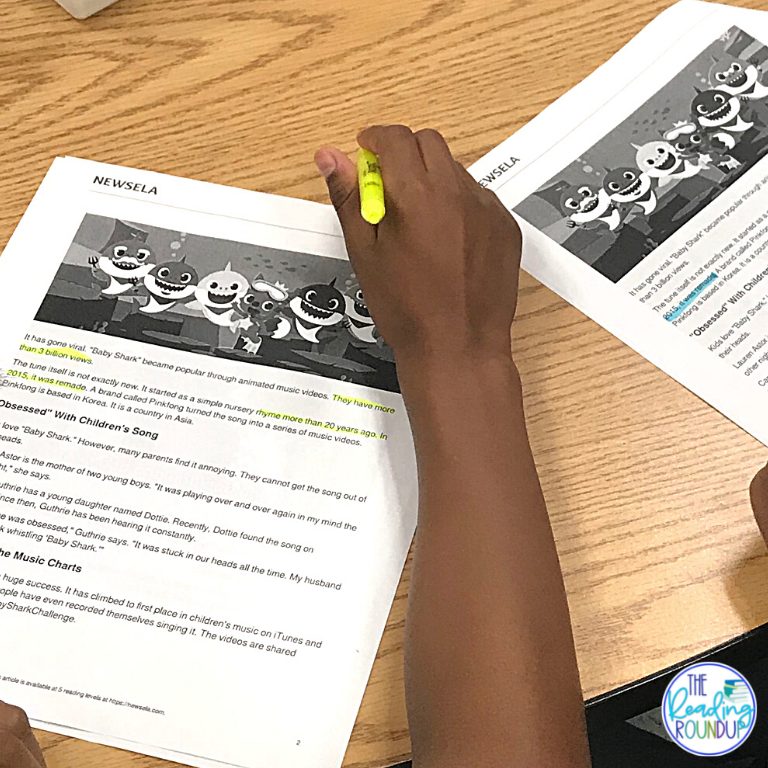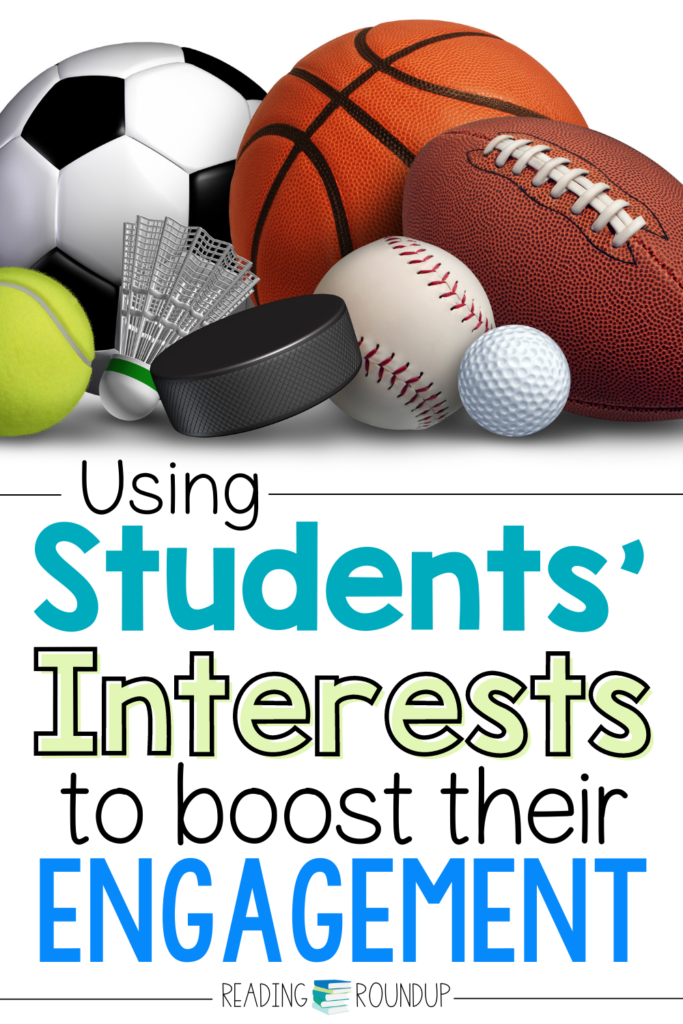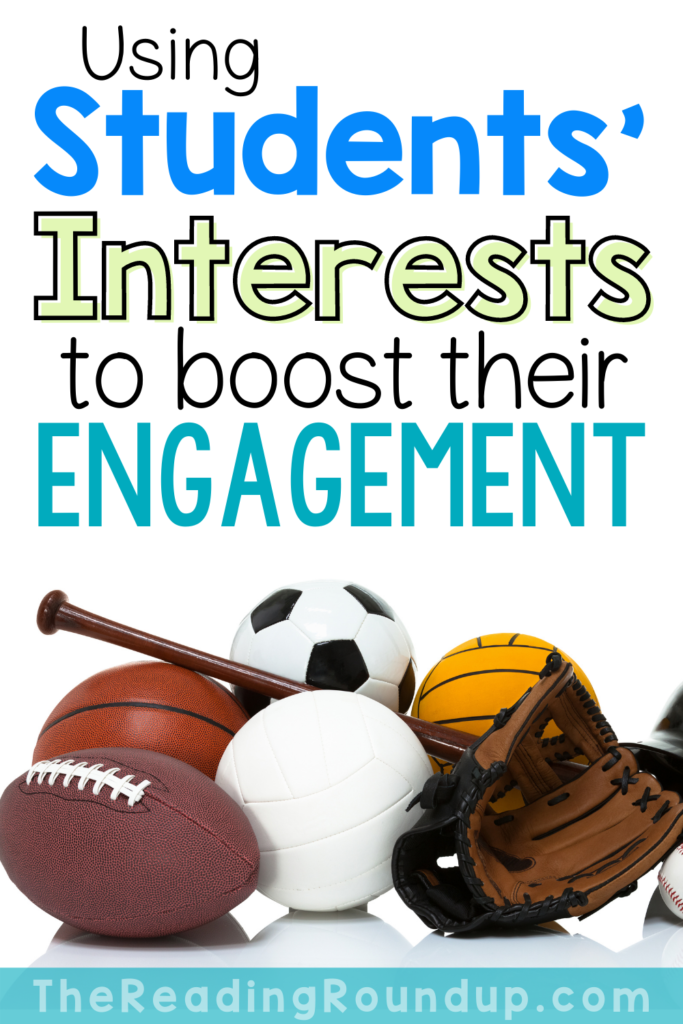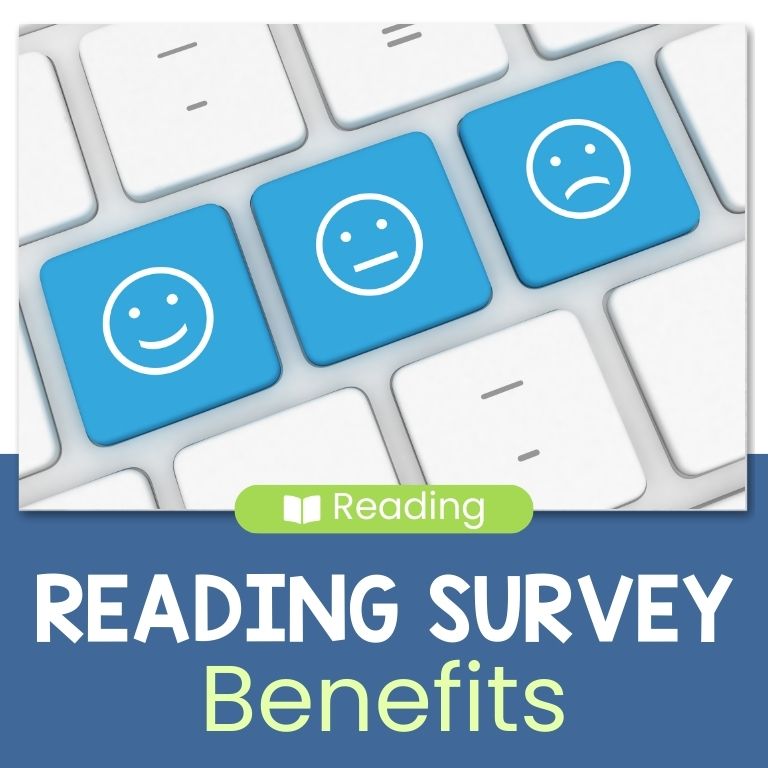
Throughout the year, you gradually learn about students in your daily interactions with them. In these discussions, students naturally share about their home lives, hobbies, pets, favorite things, and other interests. You may also use more direct approaches such as reading interest surveys.
Getting to know our students’ interests helps us establish relationships with them. It can also enhance our instruction and increase student engagement. But how can we collect and utilize this knowledge in our classrooms? Keep reading to find out!
This post includes affiliate links for which I may make a small commission at no extra cost to you should you make a purchase.
Reading Interest Surveys
As mentioned above, the easiest way to learn about students’ interests is through your conversations with them. We constantly find out more about them on a daily basis. You may even want to start taking anecdotal notes to help you remember these fun facts. It will be helpful to use in future conversations with students as well as in your literacy instruction.
Another way to learn about the interests of your students is with reading interest surveys. These are a quick way to collect information about all of your students at once. In these reading surveys, students can list their hobbies, favorite things, and other fun facts about themselves. You can also find out more about their interests as a reader such as their favorite books, genres, or topics they want to read about.

Why are Students’ Interests Important?
There are many benefits of administering reading interest surveys to learn more about your students. By making an effort to learn about them as individuals, it makes them feel seen and heard. They feel as though they are a valued member of the classroom community. This helps with student buy-in and improves engagement. Just think of how automatically engaged the soccer players in your class will be if the character in your story plays soccer also.
Incorporating Interests In Your Classroom
As a teacher, we should strive to incorporate student interests as much as possible. You can do this through books in your classroom library or the book recommendations you provide. When selecting texts for minilessons or small group instruction, try to find books that include some interests of students. You can still teach the same comprehension skill using a book with topics of interest to your students. Work smarter not harder to find these opportunities where you can accomplish multiple goals with one text!
Obviously, It is impossible to be able to include ALL students’ interests at all times. Especially with the required content you must use based on your curriculum. I admit as a resource teacher, who works with small groups and is not bound to a specific curriculum, it is much easier for me to regularly incorporate interests. But as a classroom teacher, you will want to try as best as you can. At least begin with students who are your most reluctant readers as a way of getting them more engaged. By doing so you’ll also help foster a love of reading.
Examples of Using Students’ Interests
Book Recommendations
The easiest way to incorporate student interests is through book recommendations. If you know a student is interested in a particular topic you can search for those types of books. The Book Wrangler has an amazing FREE resource that suggests books based on popular kids’ books. Such as “If You Like Dogman, you’ll like…” I made a binder of his book recommendations menus that I keep by my classroom library to help students find books they’re excited to read!
I set up a special book delivery system to build a love of reading with my students. It adds an extra layer of excitement about books. (You can get the free forms to keep track of your book recommendations!)

Some examples of book recommendations I’ve provided based on interests:
- Scholastic Year in Sports for a student who loved playing football.
- DC Comics Secret Hero Society series for a student who loved superheros.
- Strike Three, Marley for a girl who loved playing baseball and her pet golden retriever.
- One student loved to sing so I worked with the music teacher to find songbooks she could read during our independent reading time.
You just need one simple connection to get a kid hooked. It’s even more effective if you can find a series that incorporates their interests. Sometimes it may be a bit of trial and error to find a book that truly gets a kid excited about reading. But once you do, it’s a lot easier to find the next book to keep the momentum going!
Origami Unit
One particular student was very skilled with origami. Sometimes he’d get distracted in our group by folding papers instead of completing his written response. So we took a couple small group sessions to read origami directions and practice together. He was able to feel like such an all star of the group by teaching the other students. Plus we worked on comprehension skills as we read through the directions! Win-win!
Popit Fidget Toys
Popit Fidgets are the current trend with elementary students, just like fidget spinners a few years ago. Rather than fight the trends, you can learn to embrace them. This leads to immediate engagement! I bought alphabet popits to occasionally use for word work activities. We also use other popit fidgets for things such as keeping score during our literacy review games. They’re definitely not something I use all the time, but using them every once in a while makes a tremendous impact on students’ engagement levels.
Graphic Novels Unit
I’m sure we’ve all had students who would much rather read a graphic novel than a standard chapter book. One year I had an entire group of 5th graders like that! Rather than discourage them from these types of books, I fully embraced it. In fact I taught a unit on graphic novels with them. We worked on understanding how those type of books work and the components that make them different from other books. We discussed the type of reading strategies required to comprehend the story and how we must approach it differently. If those are the types of books they wanted to read, I felt it was essential to make sure they’re getting the most of the books as possible! Plus I view a kid WANTING to read a book and being excited about it a success – no mater the book!
Debates
One particular group of 5th graders I had was extremely chatty. Plus due to some personality clashes, they disagreed a lot. So I met them where they were and found an opportunity to make the challenges into a positive learning experience – hence we did a unit on debates. We talked about how to debate and disagree respectfully. I was able to find articles about popular topics that they could debate about. Such as at what age should kids have a cell phone and is Fortnite appropriate for kids.
Pop Culture Articles
When working on making inferences in text, why not use an article about a current trend instead. Newsela is an incredible resource for this! I’ve used an article about Baby Shark when it was the song you constantly had stuck in your head. We also did an article about the Drake In My Feelings Challenge when it was all my 5th graders could talk about. We accomplished our comprehension objectives AND the students were engaged because they read about something they were interested in!

You Can Do This!
Once you adopt this type of mindset, it becomes a lot easier to think of ways to incorporate students’ interests into your classroom. It does not have to be an elaborate activity. The simple act of sharing a book with a kid on a topic they enjoy will make a huge impact on them.
What ways have you incorporated your students’ interests? Please share in the comments below to help us all brainstorm new ideas together!

Want to Pin this for later?













